Three-wheeled cars have long stood on weird legal ground between real cars and motorcycles. They’re not car-cars (for lack of a better term), so they don’t have to be subjected to crash testing, and while they’re legally considered motorcycles, most people don’t need to wear a helmet to drive a three-wheeled “car.” For most of us, these are mere fun facts, since relatively few drivers are in the market for three-wheelers. In early 1930s Britain, however, three-wheel cars were taxed at the same rate as motorcycles, making three-wheelers a popular option. One of the weirdest three-wheelers of the era is the 1934 Raleigh Safety Seven. The Safety Seven is a rare case of a three-wheel car with four seats, and this particular example is right here in America.
Three-wheelers of any type are considered odd by most people today, but the Raleigh Safety Seven is a whole different level of weird. Most modern designs put two wheels up front and have bodywork that tapers to the rear-mounted third wheel. The cabin has room for just two people, and if you’re lucky, there’s a morsel of space for groceries. The Polaris Slingshot, Can-Am Spyder, ElectraMeccanica Solo, all of Vanderhall’s models, and even the iconic Morgan 3 Wheeler and Super 3 all follow this “tadpole” configuration.
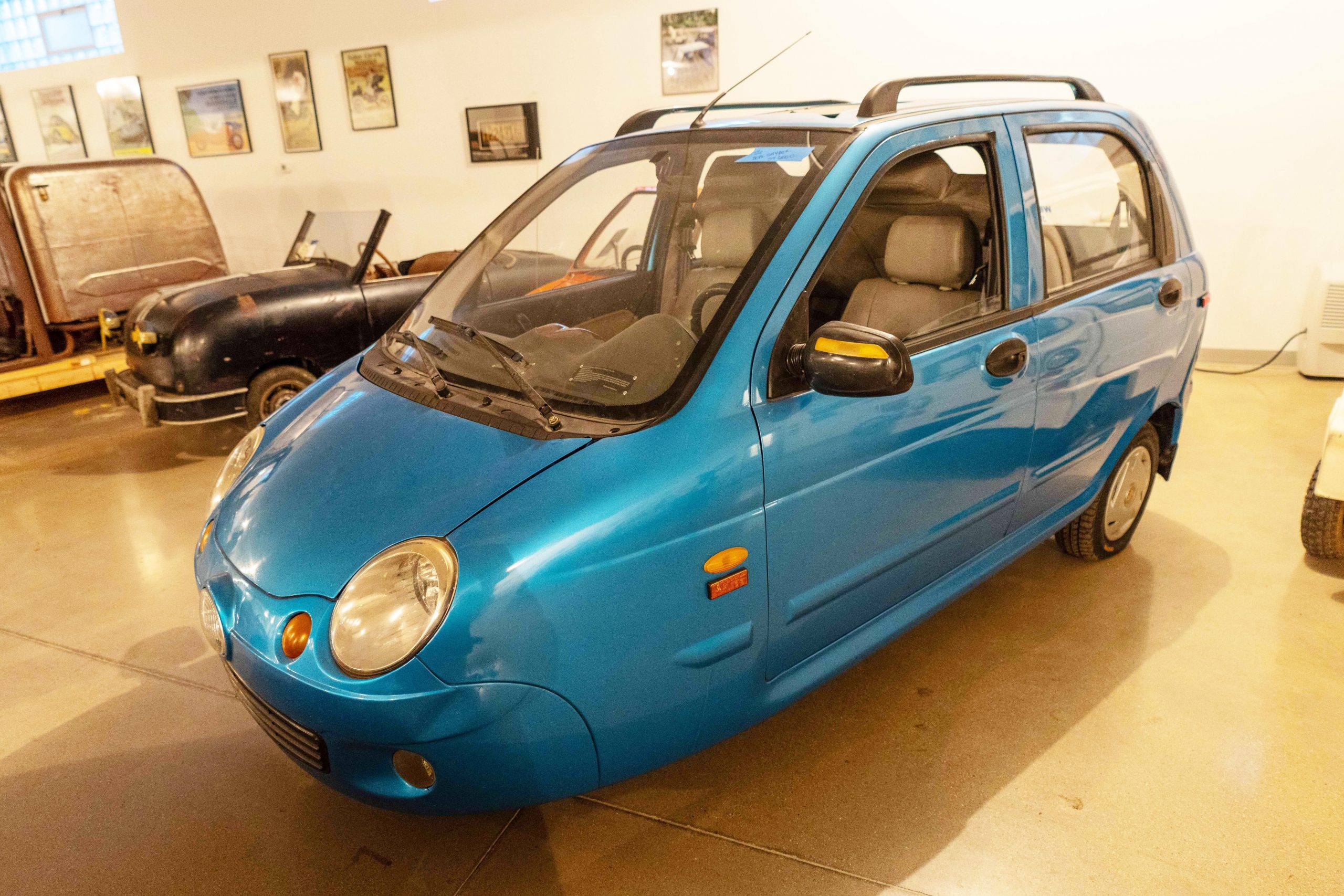
A weirder configuration is the four-seat three-wheeler. Above is the Zap Xebra, a “delta configuration” three-wheeler with one wheel up front and seating for four. The delta configuration allows for a wide rear end, which might accommodate more seats or a cargo area such as the bed of a truck. The Snyder is another delta-style four-passenger design, while the Fuldamobil is a tadpole-configured four-seater.
Far less well-known is the Raleigh Safety Seven, a distant ancestor of the fabled Reliant Robin.
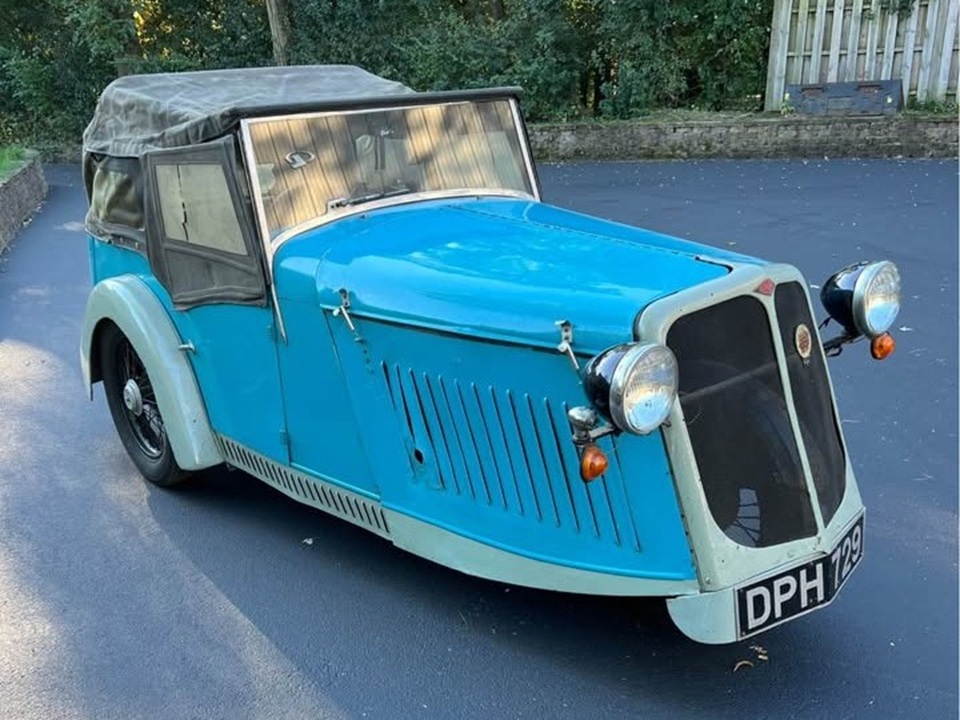
Once The Biggest Name In Bicycles
The Safety Seven wasn’t a product of a car company, but a bicycle company with some tricks up its sleeve. The Raleigh Bicycle Company is best known today for being one of the oldest bicycle companies that has remained in operation. At one point in the past, the company, which traces its roots back to the founding of a company of another name in 1885, was once the world’s largest manufacturer of bicycles. The BBC writes that at its height, Raleigh employed 10,000 workers and built two million bicycles each year.
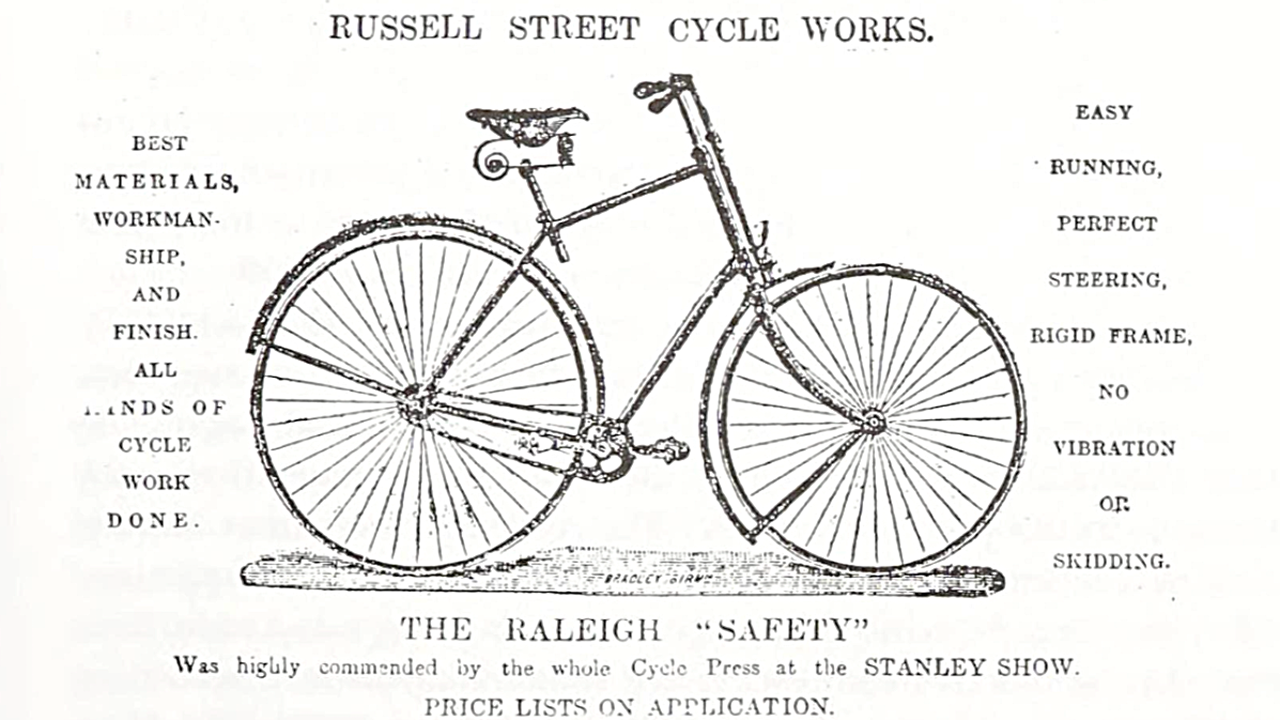
The roots of Raleigh are in Woodhead and Angois, a bicycle shop founded in 1885 by Englishman Richard Morriss Woodhead and Frenchman Paul Eugene Louis Angois. BBC continues:
The name Raleigh has been synonymous with bikes since the company was founded in a small workshop on Raleigh Street by three men in 1886. They produced just three bikes a week. Seeing the firm’s potential, a local lawyer, Frank Bowden, bought the business and founded the Raleigh Cycle Company in 1888. Bike production rose to 60 a week, and 200 new staff were taken on.
By the 1920s Raleigh was a world leader, producing 100,000 bikes and 15,000 motorcycles every year. After the war, production continued to grow, and by 1951 Raleigh was producing over a million cycles annually. But the bubble was about to burst with the boom in car ownership. Cycle sales halved and Raleigh saw its market share shrinking at an alarming rate. Raleigh responded by launching a motor scooter and introducing a new generation of bikes, but competition was growing.
In the early 1970s, Raleigh enjoyed a brief resurgence, thanks to the launch of the Chopper bike for teenagers. The bike cost almost double the price of an average child’s bike at 31 guineas (£32.55 in current money). Perhaps you were one of the 1.5 million cyclists who bought a Chopper in the 1970s? The BMX and mountain bike crazes also helped to keep Raleigh afloat, but the marketplace was volatile. The company was taken over by Derby International in 1987, but competition from abroad put Raleigh back on a knife edge in the 1990s. Raleigh’s share of the market plummeted to just 15% in 1998, the lowest since 1970. The following year was worse and the writing was on the wall for the company. Raleigh was forced to make some tough decisions, and streamline its factories.
One of the bicycles that Raleigh was famous for was the Raleigh Safety, a bicycle that entered production in 1887.

The safety bicycle, or just “safety,” was an invention of the 1870s and was marketed as a safer alternative to the penny farthing (above) and its comically huge front wheel. Safety bicycles featured two wheels that were small enough to keep the rider’s feet able to touch the ground. Those feet also powered a drive system that spun the rear wheel, as opposed to pedaling the front wheel like they would on a penny farthing. Another common feature of the safety bicycle was a frame that was shaped like a diamond.
The safety bicycle would become so popular that it has since become the default type of bicycle. Basically any bicycle that you would buy in a store today would have been considered a safety bicycle well over a century ago. Yet, today, nobody calls these bikes safety cycles, but you might still hear someone say “diamond frame” bicycle today.
Slapping An Engine On A Bike
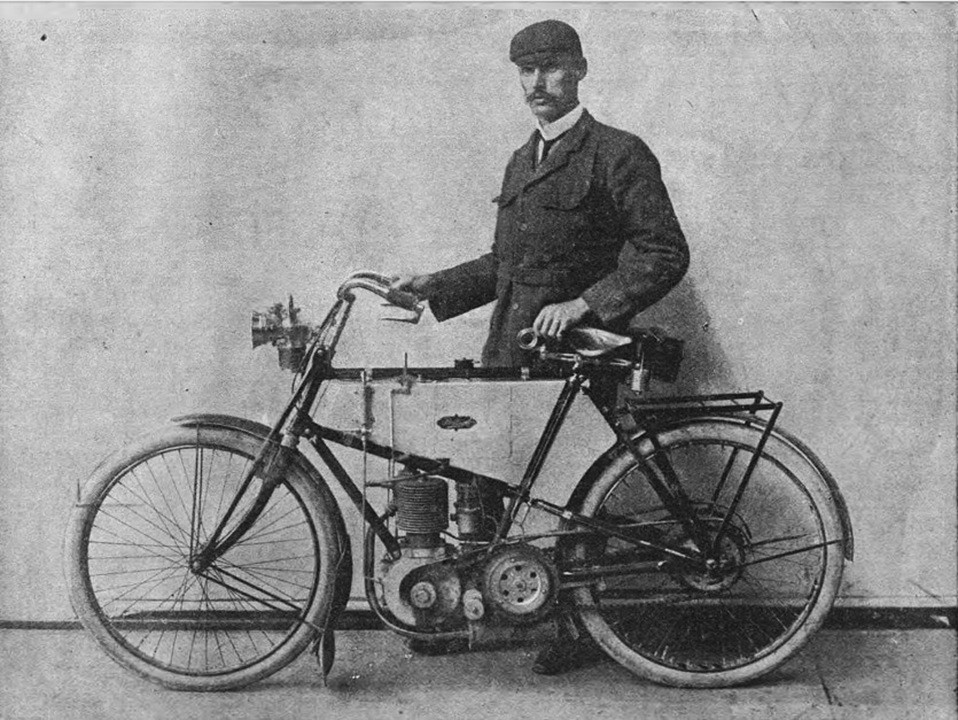
According to the Society of Automotive Historians in Britain (SOAHIB from here out), Raleigh’s first motorcycles were built in 1899, and these were little more than bicycles with a 2 HP engine mounted over the front wheel and driven directly with a belt. In 1903, Raleigh refined its motorcycle design with a twist grip throttle and a more traditional layout.
But more important to this story is that in that same year, Raleigh built its first three-wheeler. This was called the Raleighette, and it featured two front wheels, a 3.5 HP water-cooled engine, and a wicker bench seat wide enough for two people. A hotter 6.5 HP model was built in 1906. As Classic Bike Hub writes, Raleigh’s motorcycles were offered for as low as £25, but poor sales led to the firm canceling motorcycle and three-wheeler production to focus entirely on bicycles by 1908.
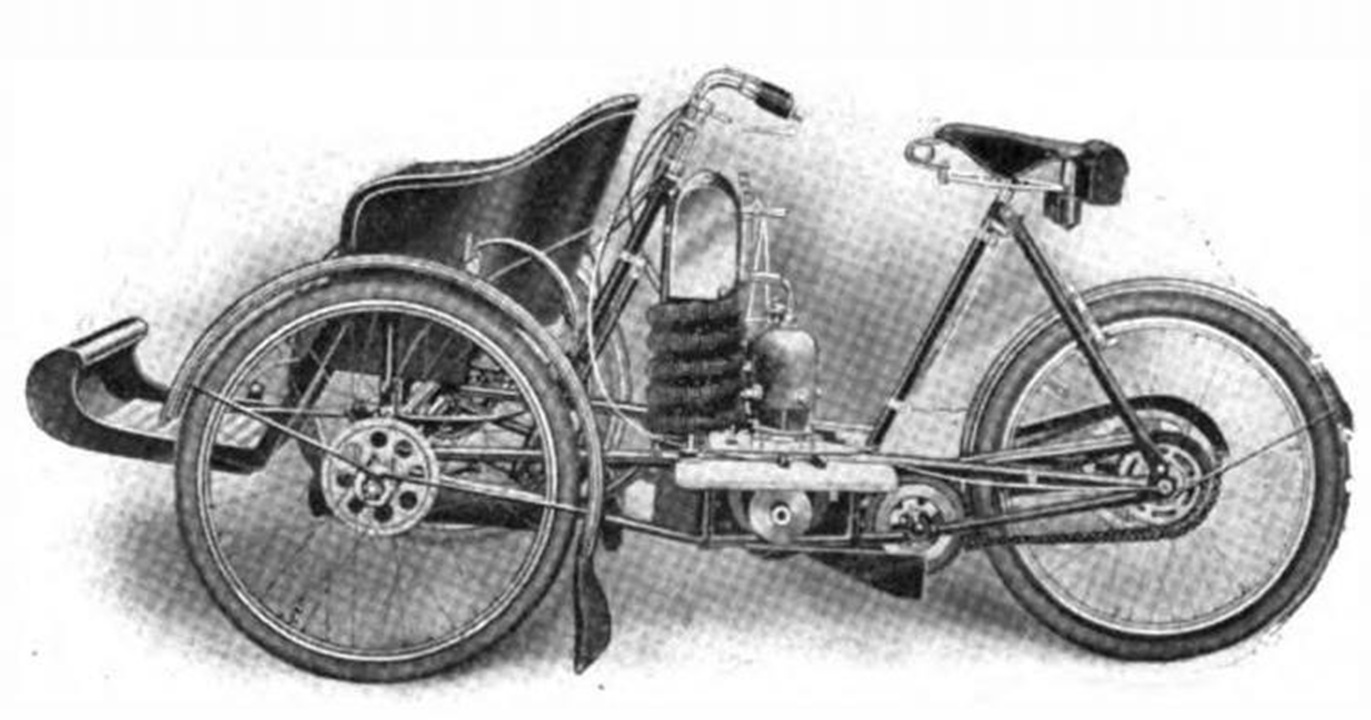
This turned out to be a winning strategy. As the SOAHIB notes, Raleigh rose to become the world’s largest producer of bicycles by 1913. However, this wouldn’t last as Raleigh decided to re-enter the motorcycle market after World War I. In 1929, the SOAHIB writes, Raleigh responded to the rapidly deteriorating economic conditions by deciding to re-enter the three-wheeler market.
This time, instead of making its own trike, Raleigh purchased the rights to the Ivy Karryall, a three-wheel delta configuration 5-cwt (559-pound) delivery van with an exposed front wheel. Raleigh’s version was called the Light Delivery Van and featured a chain drive for the pair of rear wheels.

This wasn’t the first time Raleigh had considered making a cheap car. According to The World Guide To Automobile Manufacturers, in 1922, Raleigh built a minicar with a flat-twin engine, but never put the design into production.
In 1932, Raleigh followed the Light Delivery Van with a low-cost car. Chief designer Tom Lawrence Williams, who had worked with Raleigh since 1930 and had made design changes to the Light Delivery Van, now designed the company’s first passenger car. This car, which was reportedly based on the delivery van, featured a motorcycle platform, a single-cylinder engine, and a chain drive. This car was to be sold for £89 15s, but was immediately followed up with something a little more ambitious.
The Raleigh Safety Seven
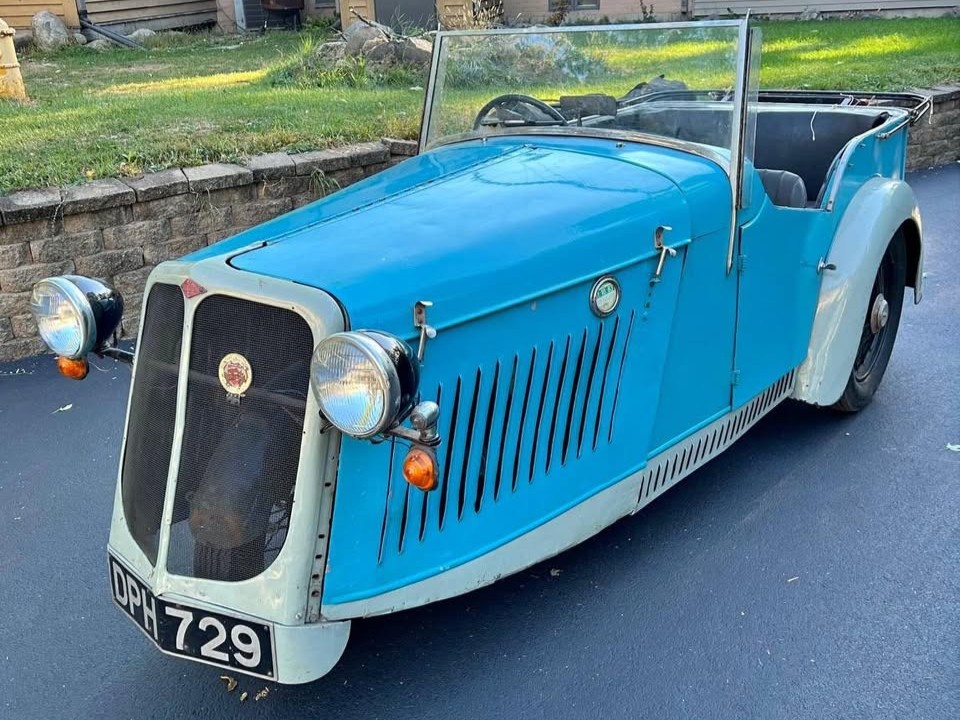
As the book Early Days On The Road explains, Raleigh wanted to take advantage of the boom in three-wheelers in Britain. Due to taxing schemes, motorcycles were subject to only a £4 tax as opposed to the sliding-scale horsepower-based tax that cars had to face. This meant that British citizens were picking up BSAs and Morgans by the dozen. Raleigh wanted a slice of the market, and it would do so by marketing to families with something weird.
Tom Lawrence Williams designed a four-seat delta-style convertible with a 742cc side-valve V-twin engine good for 17 HP, a top speed of 55 mph, and fuel consumption of 60 mpg. A British buyer going through tough times in 1933 would be able to get a Raleigh Safety Seven for a whopping £94 and ten shillings. What was interesting about the Safety Seven was its final drive. Instead a chain as commonly used, the Raleigh was a shaft-drive machine.
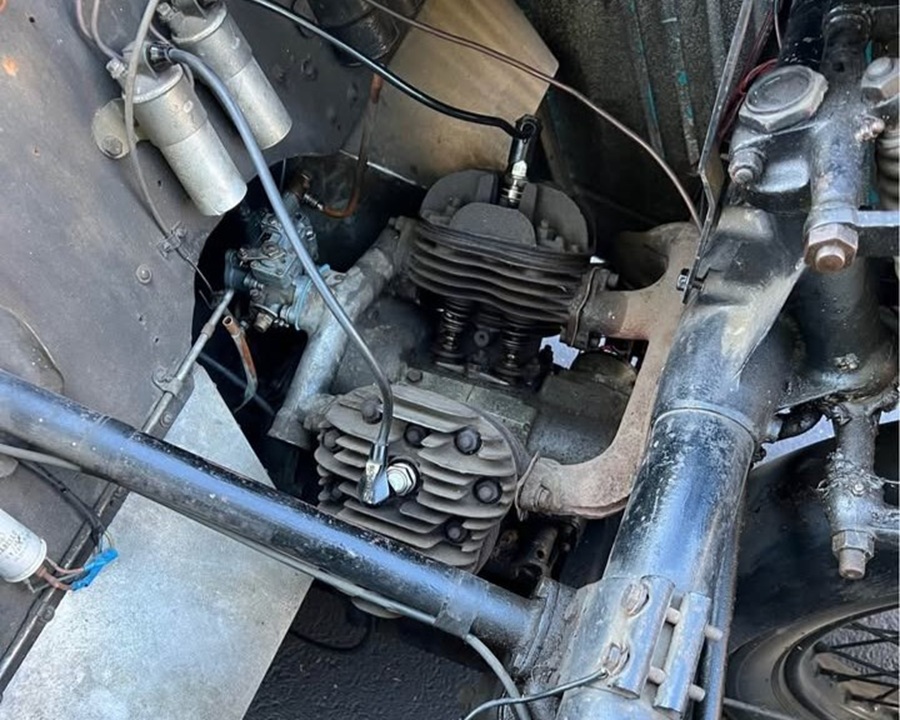
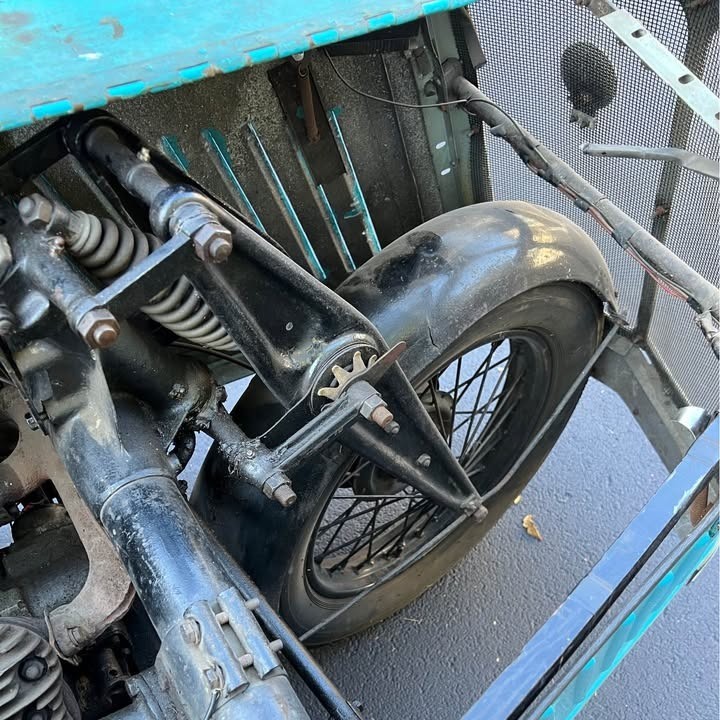
Unlike many three-wheel convertibles of the day, it had room for a family of four. Reportedly, this was Raleigh’s first successful car, too, and the company managed to sell around 3,000 examples over the course of a few years.
Despite the success, Raleigh decided to end all motor vehicle production and focus entirely on bicycles. Sources vary on when this happened, with some saying it happened in 1934, 1935, or 1936. Either way, Raleigh gave up on the idea of three-wheelers – but someone within Raleigh didn’t, and that was Williams.
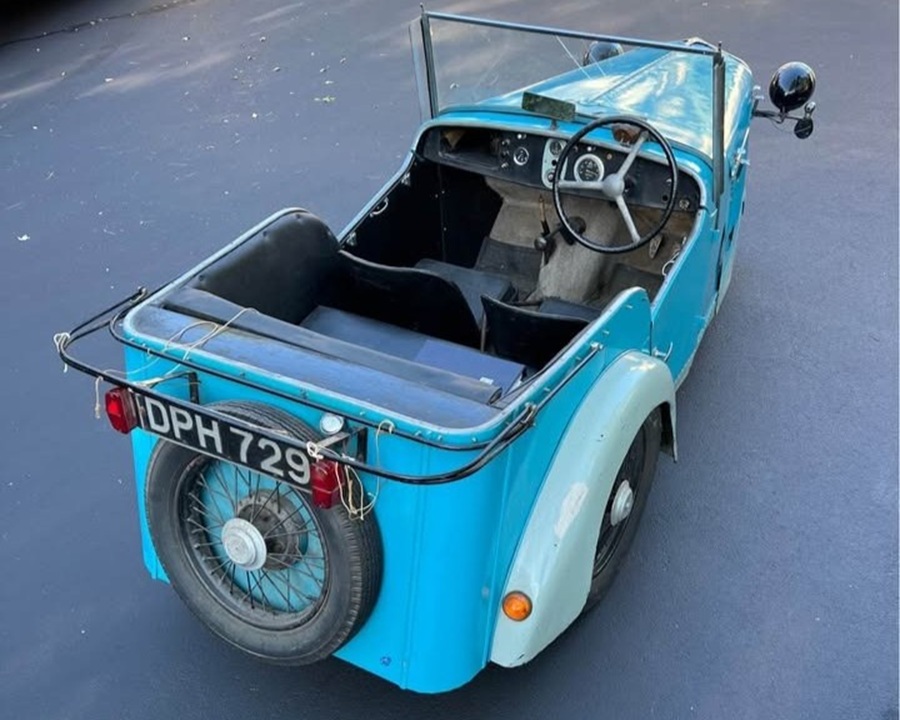
Most sources report that Williams purchased the rights to Raleigh’s 7-cwt (784-pound) van and joined E. S. Thompson in a new venture: Reliant. Yep, that means that the car on your screen is technically the great-grandparent of the famous Reliant Robin and other Reliant three-wheel models.
That leaves us with the 1934 Raleigh Safety Seven that’s for sale in Cary, Illinois.
Convertible For Four
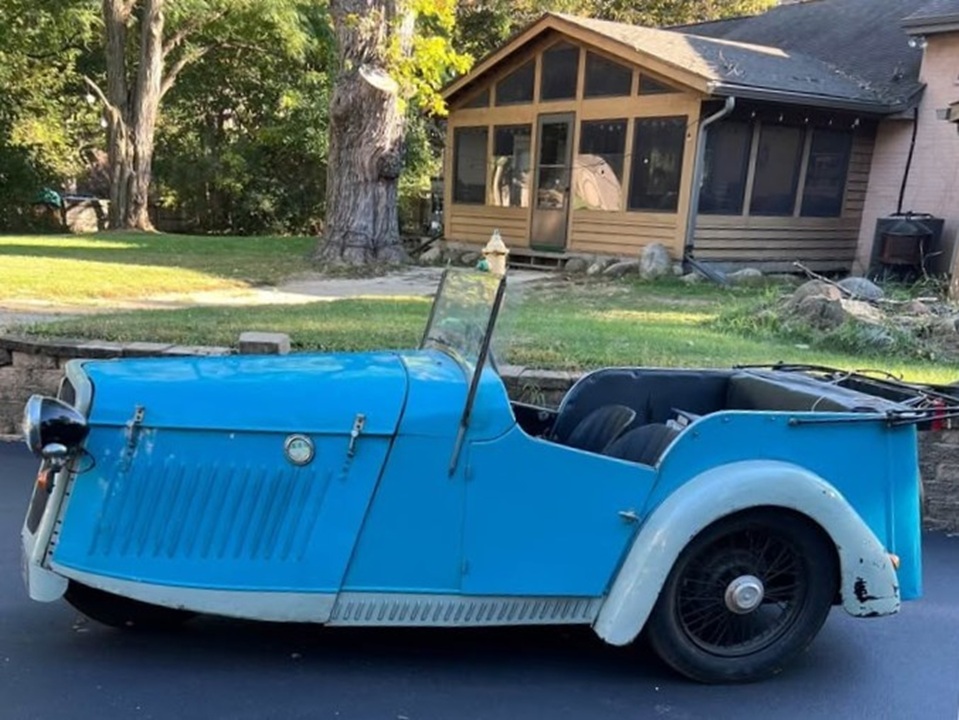
This car is a rare sight anywhere in the world, and I bet you’re wondering how on earth it ended up more than an hour northwest of Chicago. This Safety Seven used to be in the collection at the Small Wonders Micro Car Museum of Crystal Lake, Illinois. Somehow, I’ve lived within perhaps 20 minutes of the museum for most of my life, yet I’ve never been to it. Sadly, the museum closed in December 2023.
Many of the cars were auctioned at Mecum, and much of the collection has also been showing up on my local Facebook Marketplace.
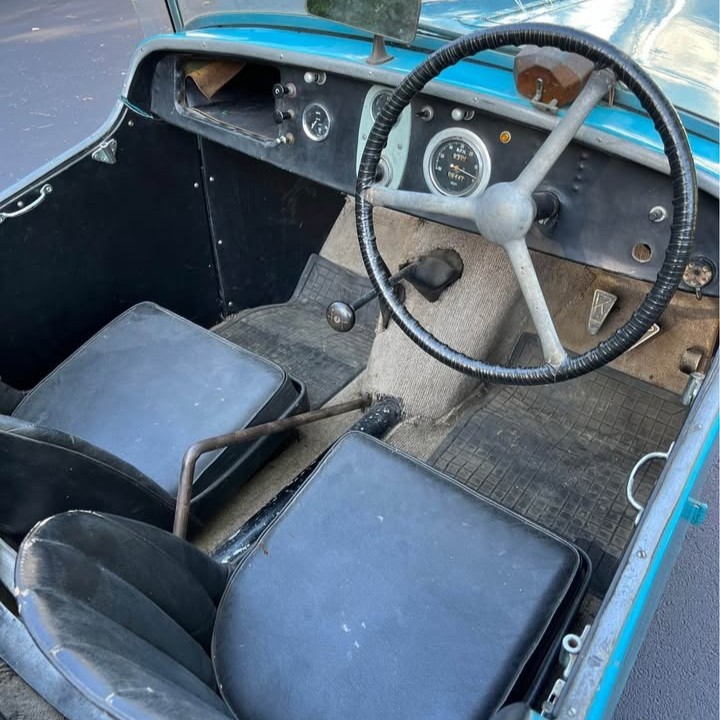
If you’re curious about what owning one of these is like, Hagerty UK quoted an owner:
According to owner Martin Strange, his Raleigh Safety Seven could be the most ironically named car of all time. “It’s a real death-trap. I’ve lifted a rear wheel just going gently round a corner, and the steering column is 1/2” of solid steel. If you have any kind of crash, you are going to have a lance straight through your chest.”
Safety was obviously less of a concern to his grandfather Charles, who bought the car new in 1935 for 99 guineas. Launched two years previously by Raleigh, this three-wheeler car was aimed at the family market and had a v-twin 742cc engine that drove the rear wheels by means of a driveshaft. Although sales were not bad, Raleigh soon decided that their future lay in bicycles, leaving their chief designer Tom Williams to depart and set up on his own. His company- Reliant- went on to become world leaders in three-wheel car production.
Over the next few years Charles managed to put nearly 36,000 miles on the clock, mostly driving on short journeys near his home in Cirencester, but sometimes venturing further afield. “We have one picture of him and the car on the beach at Weston-super-Mare in about 1937, and there are stories of him going up Birdlip Hill in Gloucestershire in reverse gear, as it wouldn’t make it in first.”
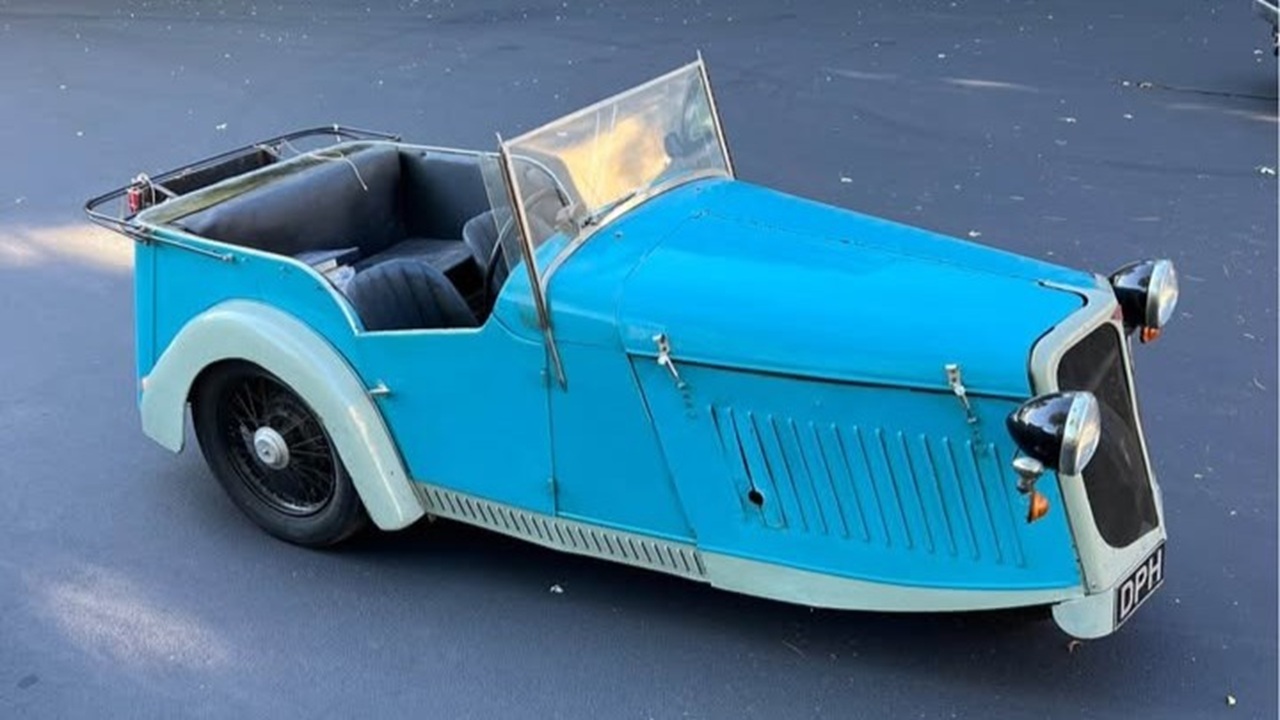
The seller of this former museum piece says that it is complete and comes with a lot of paperwork. However, the vehicle has not run for years, and the vehicle has a crack in its windshield. I don’t see either as a huge deal. The windshield is just a piece of flat glass, and the engine shouldn’t be any more difficult to get running again than an old motorcycle. Give me two hours, and I bet I could get this engine to bark off, if not run well.
The seller wants $10,500 for the vehicle, and I don’t think that’s a terrible place to start negotiations. These cars are weird, cute, and rare, but not exactly worth a million bucks. This particular example looks like it’ll be a great little ride after a quick revival and a cleaning, too.
I could totally see myself scooting around in this little car. Cary is barely even 10 minutes from me, too, so I could buy it without even taking a ton of time out of a workday. So, maybe you should buy it instead. This little guy is nearly 100 years old, and it looks ready for many more years three-wheeled fun for four.




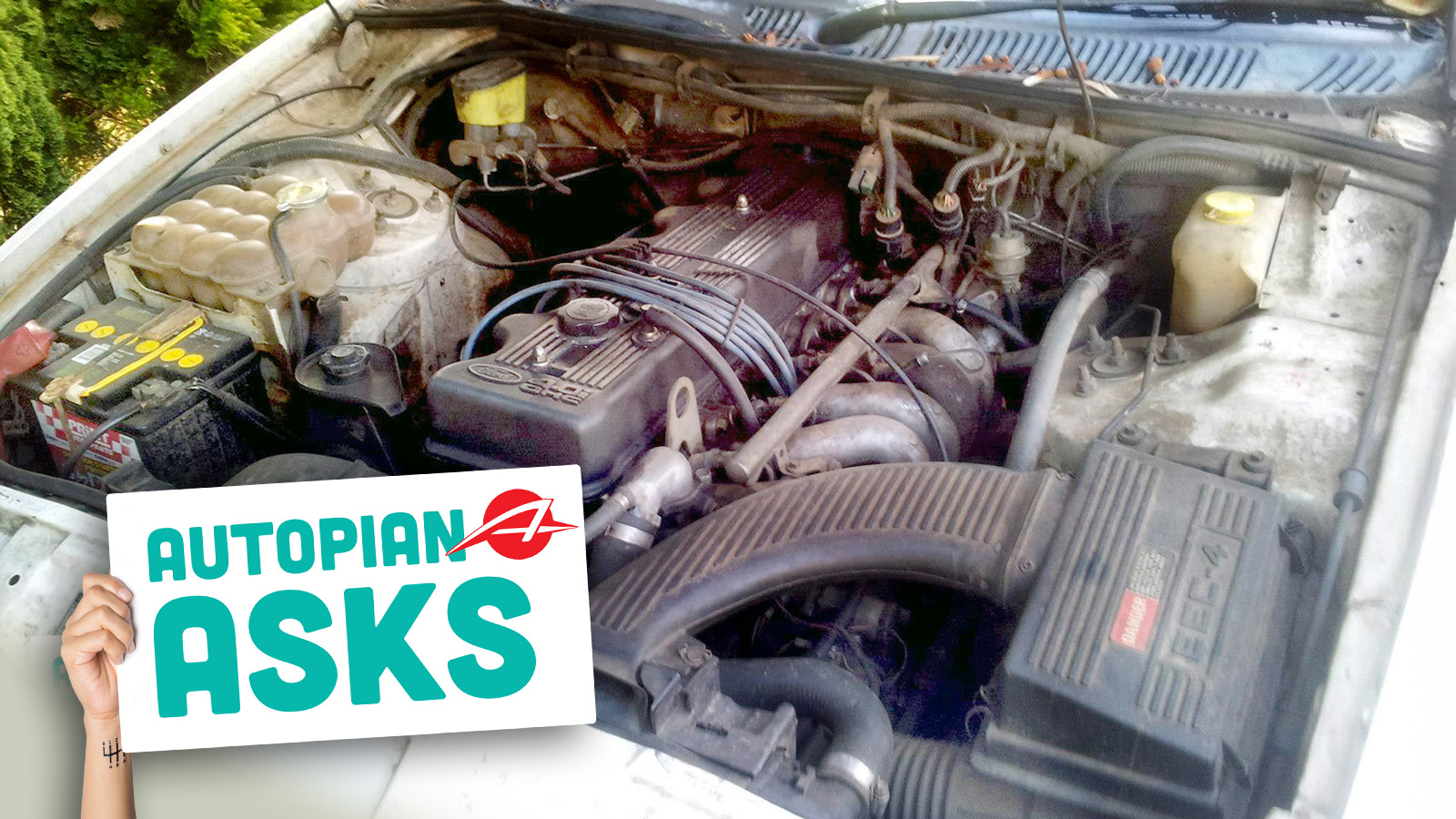

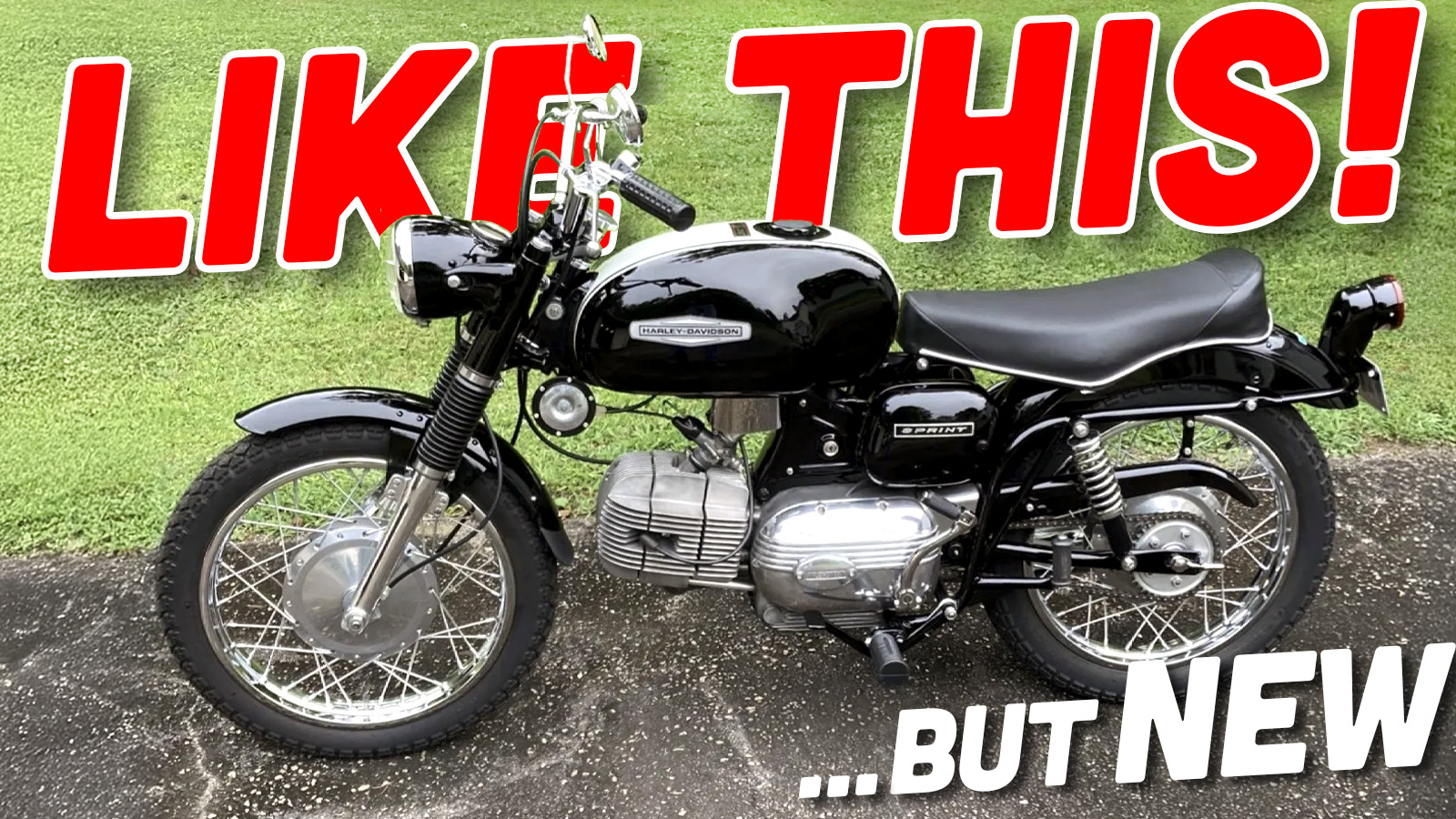
That top is very interesting, with the small window mounted low. It makes sense given that the mirror is dash mounted, but I don’t think I have ever seen a window like that. I would love this thing if I had space, time, money and skills!
Birdlip Hill is very long and steep as roads in that area of the country go – it’s part of the same escarpment as Cooper’s hill, where the cheese-rolling happens. Many car companies used to include it in their test routes.
I’ve always known it as Air Balloon hill, after the pub that used to be at the top.
The trick to getting up it in a small car, is to get as much speed as possible on the flat, and hope no one pulls in front of you.
When they were still building them in England Raleigh bicycles had some neat details. I still remember the wrap over seat stays on dad’s mid 70s Raleigh Grand Prix. Being cheaper my Record didn’t have that, or down tube shifters.
The other details that stick are the distinctive fork crown on the 3 speed bikes that was a horizontal tube with chrome end caps.
My wife had a Raleigh hybrid bike in the early oughts, but that was made in Asia with Shimano components and no different from a comparable Giant or Specialized. Raleigh is still around but in name only just like Masi or Fuji.
I knew about the Raleigh vans but the car was news to me. I can s÷ why they dropped the product.
With only a driver and no passengers, you end up with a front-heavy delta trike. Little-wonder it’s tippy while cornering.
With an entire family loaded in the passenger space, the handling was likely balanced well.
“The Safety Seven is a rare case of a three-wheel car with four seats”
Another is the Messerschmitt KR200:
https://live.staticflickr.com/6200/6099085041_c1317a6b44_b.jpg
OK TECHNICALLY it was a tandem two seater but I know for a fact three kids could fit on that bench back there to enjoy “limousine comfort”
Allegedly, Williams chose the Reliant name because a lot of the components on the Raleigh van were marked with an “R” initial, and choosing something with the same letter allowed them to keep on using the same vendors/suppliers without anyone having to modify their tooling. The fact that Raleigh and Reliant also have the same number of letters also probably isnt a coincidence
As soon as a government creates a law, dozens of folks find the loopholes.
It’s like the UK equivalent of Kei cars, a specific tax loophole to encourage small, cheap, vehicles.
If ever there was a car that is the complete opposite of a Smart car, the Raleigh Safety Seven is it. Despite that, it’s an intriguing little bugger. As a diehard Morgan fan, I get the appeal of three-wheel design, but I prefer the tadpole layout for stability and handling.
On a side note: when I was in high school road bikes were in vogue and everyone wanted a so-called English racer with drop handlebars. By far, the most popular bike was the Raleigh Record (usually white). They were practically ubiquitous for a time. My baby blue Mercier Eddy Merckx Special was definitely an outlier, but then I was always something of an iconoclast. Still, I spent many hours maintaining my girlfriend’s Raleigh. I haven’t thought of Raleigh in a half century, until your post today. Wow, time flies.